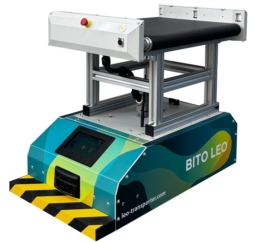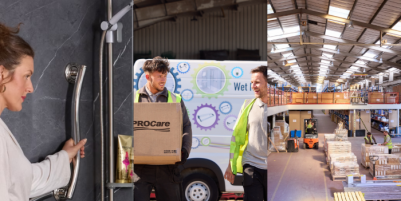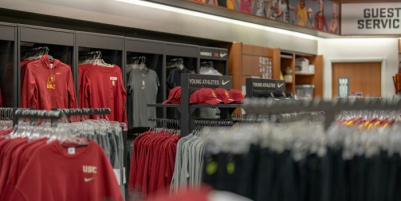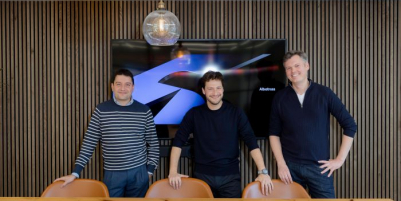-
AI startup Onton raises $7.5M to reinvent the way the world discovers and decides what to buy - November 26, 2025
-
Forklift Market Positions for Recovery as Confidence Expected to Build from 2026 - November 26, 2025
-
PROCare achieves 300% order capacity increase and 99% picking accuracy with Forterro’s ERP solution, Orderwise - November 26, 2025
-
DHL boosts operational efficiency and customer communications with HappyRobot’s AI Agents - November 25, 2025
-
STENA LINE TEAMS UP WITH CAMERA TELEMATICS TO DRIVE SAFETY IMPROVEMENTS AT IRISH SEA PORTS - November 25, 2025
-
Another design award for Toyota’s lithium-ion Traigo_i counterbalanced forklift - November 21, 2025
-
Stuut Technologies Raises $29.5 Million Series A Led by Andreessen Horowitz to Automate Accounts Receivable Work - November 20, 2025
-
INCREASED DIGITAL INVESTMENT REQUIRED TO KEEP PACE WITH 2026 CUSTOMS CHANGES - November 19, 2025
-
FULFILMENT SOLUTIONS FOR SPORTS MERCHANDISE: KEEPING OUR EYE ON THE GAME - November 19, 2025
-
COMPLEX, COSTLY & CONFUSING – THE END OF DE MINIMIS - November 19, 2025
BITO has introduced a new generation of its LEO AGV (Automated Guided Vehicle), which combines an entirely new chassis with productivity enhancing technology to provide an innovative solution for automating material flow.
Far less complex than more expensive AGVs, the new LEO flow and LEO carrier offer vital advantages over manual handling and conveyor alternatives for transporting bins and containers, with a payback period often in one year or less.
LEO was first introduced in 2017 as the simplest AGV available on the market. Delivered in a box, all that’s required to get going is to lay a route marked by a 19 mm wide blue or green track line with adhesive tape (there is a range of tapes to suit different levels of wear) or floor painting for the transporters to follow using optical navigation. Users enter instructions on a tablet and markers with printed QR codes guide LEO on destination points, the speed to be driven at, the start and end of traffic light control, charging points, acoustic warning signals and more.
This means the transporters do not need to be programmed to the layout of a facility, so users can implement simple or moderately complex layouts themselves without the need of IT support and get started in just a few days. They can also adapt the system quickly and easily, enabling rapid reaction to seasonal fluctuations and warehouse reorganisations.
Enhanced technology provides key new features to further enhance LEO’s simplicity and ease of use. For a start, the new generation does not require the onload / offload transfer stations of the previous version, allowing seamless flow of bins between the LEO and conveyors or carton live storage (CLS) flow lanes.
The new transporters can swivel 180° or 90° on the spot, allowing them to navigate narrow spaces and layouts having an outward and a return journey without space for a U-turn loop. LEO can also reverse over short distances of up to 5 m and can travel up to 25 m in a straight line without lane-marking. This avoids lane damage at junctions with frequent forklift traffic.
The new chassis of the LEO provides a standard platform for a range of new LEO variants. Ideal for ecommerce picking operations, LEO carrier is equipped with a shelf that has four levels, each measuring 625 x 425 mm, to hold goods being transported. It has a maximum load capacity of 50 kg, vehicle dimensions of 700 mm wide x 500 mm long x 1458 mm high and a battery run time of up to 16 hours. It can be directed to various destinations by entering data on the permanently mounted tablet. Used as a trolley to accompany the order pickers and can the take picked goods to packing stations. Handles at the front and the rear allow LEO to be lifted from its track. It can also deliver incoming goods to a bin storage facility/ASRS system within a warehouse or feed an elevator to take bins to a mezzanine or multi-level picking structures. And weighing just 50 kg, is light enough to operate on mezzanines itself.
For returns management, goods can be placed on the LEO shelves for transportation to reworking stations or back to the warehouse. With sufficient space for a number of bins and boxes or for individual items, the LEO carrier can also be used as a mobile buffer store between two production stations when supplying production lines with raw materials and parts.
LEO flow is equipped with a belt conveyor top and an automatic lifting mechanism. It has a maximum load capacity of 35 kg and a battery runtime of 10-14 hours. A 600 x 400 mm load of either containers, cartons or small parts can be picked up and discharged sideways to the direction of travel. Three reflective light barriers detect the position of the goods on the vehicle and ensure that the goods are centred before transport.
This version is ideal for picking up and delivering goods to and from conveyor systems, can be fed directly from an automated small parts warehouse and transfer goods to an ASRS. It can also deliver goods to gravity roller conveyor flow lanes of a Carton Live Storage system fitted with sensors to allow the transfer from LEO to flow lane.
The LEO Smartbox communicates between vehicles and conveyor technology. The modular system can be used with a standard LEO transporter, allowing LEO locative variants (built as of 2022) to be converted to a LEO flow system.
A LEO locative version, which uses transfer stations, is also available as is a LEO custom version, which accommodates customised add-ons for carrying application-specific items. Options for the LEO system include automatic opening and closing of high-speed doors and the LEO gateway, which collects data for real-time analyses and remote maintenance in the event of problems.
All versions of LEO are significantly cheaper than conveyor technology for a low to medium number of journeys (up to a maximum of 200 missions per hour). The transporters also consume less energy and incur lower maintenance costs. Unlike fixed conveyors, pathways remain unobstructed and routes can be changed easily and without any assistance from specialist staff. A defective vehicle can simply be removed and the system continues to run. As operations expand, it is simple to phase in more LEO AGVs.
Compared to manual transport,LEO reduces staff walking distances to save valuable time, allowing staff to focus on processes where they are more productive, such as order picking, while business growth can be supported without employing additional staff.
Commenting on the new generation of LEOs, Edward Hutchison, Managing Director of BITO Storage Systems, said: “The low-cost, simple yet effective driverless LEO flow and LEO carrier AGV transporters from BITO make a smart addition to warehouses, ecommerce fulfilment centres and production facilities. Many companies are investing in automation technology to gain competitive edge and to meet the challenges posed by labour availability, shortening order lead times and high service levels. Any company falling behind will struggle to sustain their business and smaller operations are particularly challenged. Automation can be a leveller but for many, the capital expenditure required is often a barrier.
“BITO’s LEO AGV, however, overcomes this barrier by offering an affordable, simple, yet productive automated internal transport system. Delivered ready-to-go, LEO provides users with a flexible, future-proof and productive intralogistics solution. By enhancing productivity without need for complex installation, costly infrastructure and control software that will require upgrading or a large capital commitment, LEO provides a rapid return on investment – generally within a year, depending on the application. And the flexible system can be easily scaled up to match business growth, with individual LEOs added straight off the shelf.
“Finally, and crucially, by reducing the need for general manual handling, LEO offers health and safety benefits. Staff rarely need to lift bins and the risk of accidents is further minimised by separating humans from forklift truck traffic in busy warehouse operations because LEO can travel in, or traverse, busy lift truck routes, transporting items safely in areas of potential risk.”
For more information on LEO AGVs, visit bito.com.

































